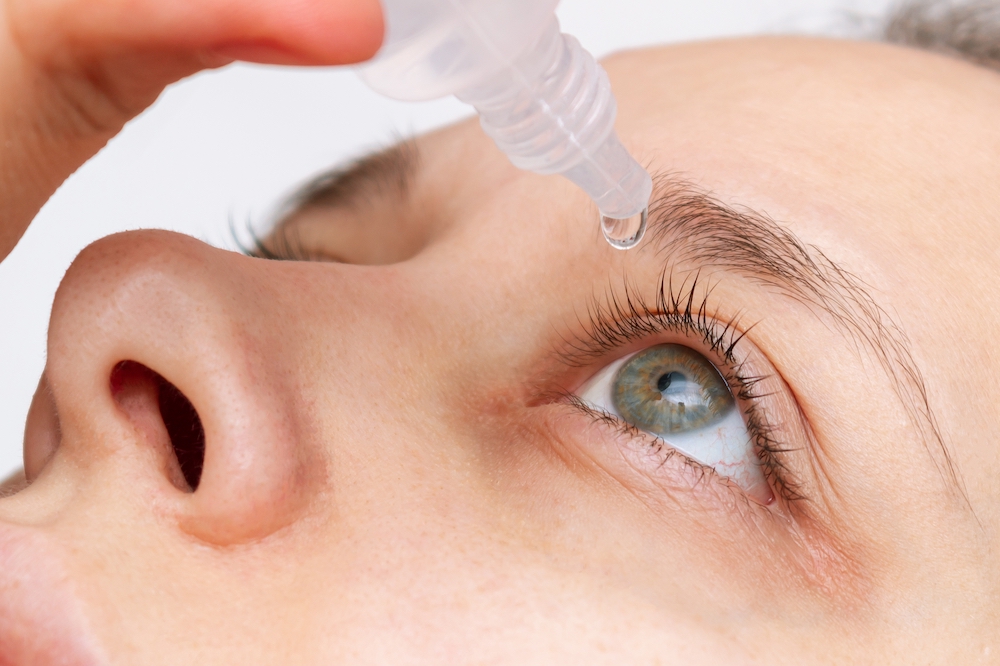
Dry eye is a condition where tears do not provide adequate moisture to keep the eyes lubricated. Tear instability may be due to factors like producing poor-quality tears and not producing enough tears. The instability can lead to inflammation and eye surface damage. Dry eye disease is uncomfortable as the eyes feel dry and may burn or sting.
Symptoms of Dry Eye Disease
If you suffer from dry eye disease, you may experience symptoms in certain situations or environments. The symptoms may be mild or severe, based on your condition. They affect both eyes. Symptoms include:
Burning or stinging sensation
Scratchy or itchy sensation
Feeling like you have sand in your eyes
Eye redness
Sensitivity to light
Blurriness or eye fatigue
Stringy discharge in and around the eyes
Discomfort wearing contact lenses
Problems with night vision
Excessive eye-watering
If you have prolonged symptoms, visit your eye doctor for a diagnosis.
What Causes Dry Eye Disease
Dry eye disease occurs due to disruption of the tear film. The film contains three layers: fatty oils, aqueous fluid, and mucus. A healthy combination of the three layers helps to keep the eyes clear, smooth, nourished, and lubricated. When there is a problem with any of the layers, it can lead to eye dryness.
Dry eye may be due to reduced tear production or increased tear evaporation. The leading factor of dry eye disease is meibomian gland dysfunction. The meibomian glands are responsible for producing oil for the tear film.
Reasons for Tear Film Dysfunction
Tear film dysfunction may be caused by various reasons, including:
The natural aging processes
Hormonal change
Autoimmune diseases
Allergic eye disease
Meibomian gland dysfunction
Inflamed eyelid glands
Certain medications or preservatives in eye drops
Prolonged contact lens use
Blinking less often or prolonged digital device use
Eyelid disorders, such as lids turning inward or outward
Environmental factors like wind, smoke, and dry air
Studies show poor diet or Vitamin A deficiency can cause dry eye syndrome.
Complications of Dry Eye Disease
If not treated, dry eye disease can lead to several complications. Inadequate tear production can increase the risk of eye infections. Tears help to protect the eye surface, keeping it healthy. Severe dry eye can lead to corneal surface abrasion, eye inflammation, corneal ulcers, and permanent vision loss. Eye dryness can be painful or uncomfortable. It can make it hard to perform daily tasks like driving or reading, reducing quality of life.
Treating Dry Eye Disease
Treatment for dry eye depends on the underlying cause and severity of symptoms. Your eye doctor will examine your eyes to determine the cause. Making lifestyle changes, such as eating a healthy diet and improving your work environment, can help to reduce symptoms.
Treating underlying health conditions or changing medications can relieve dry eye, too. Treatment options include eye drops, eye inserts, autologous blood serum drops, punctal plugs, and special contact lenses. Thermal pulsation and intense-pulsed light therapy can help to unclog blocked oil glands.
Symptoms of dry eye may be similar to those of eye allergies. Your eye doctors will conduct several tests to determine if you have dry eye disease.
For more on the causes of dry eye disease, visit Bright Eyes Optometry at our office in Red Bank, New Jersey. Call (732) 605-0300 to book an appointment today.




